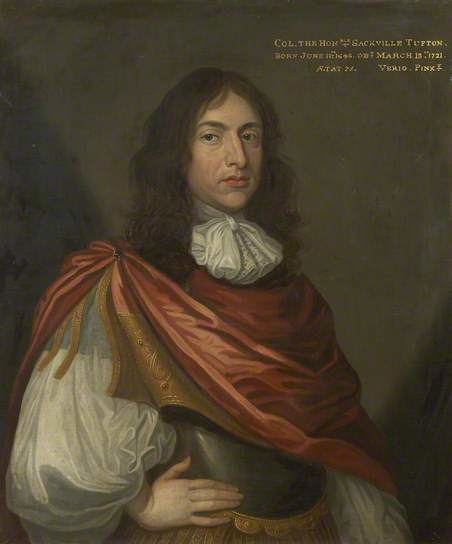Name Sackville Tufton | Died March 30, 1721 | |
 | ||
Children Sackville Tufton, 7th Earl of Thanet Parents Margaret Sackville, John Tufton, 2nd Earl of Thanet Grandchildren Sackville Tufton, 8th Earl of Thanet Grandparents Lady Frances Cecil, Richard Sackville, 3rd Earl of Dorset, Nicholas Tufton, 1st Earl of Thanet Great-grandparents Sir John Tufton, 1st Baronet | ||
Colonel Sackville Tufton (11 June 1646 – 30 March 1721) was the son of John Tufton, 2nd Earl of Thanet and his second wife Margaret Sackville. He married Elizabeth, daughter of Ralph Wilbraham of Newbottle, Northumberland. They had twelve children:
Tufton was an officer in the 1st Foot Guards. In 1673, he was wounded in the Battle of Schooneveld against the Dutch fleet. His right hand was shattered with muscles and tendons lacerated and bones broken. Recovery was slow and painful and he required several surgical operations to remove bone fragments, performed without the benefit of anaesthesia. He recuperated in Bath in the following spring where he was treated by Dr Robert Peirce. He returned to Bath over several years for further treatment under Peirce’s direction and regained some use of his hand.
In 1687, he was appointed colonel of a regiment of foot, which later became the East Yorkshire Regiment.[1] He was removed from his colonelcy at the end of 1688 for refusing to swear loyalty to William III after the Glorious Revolution.
